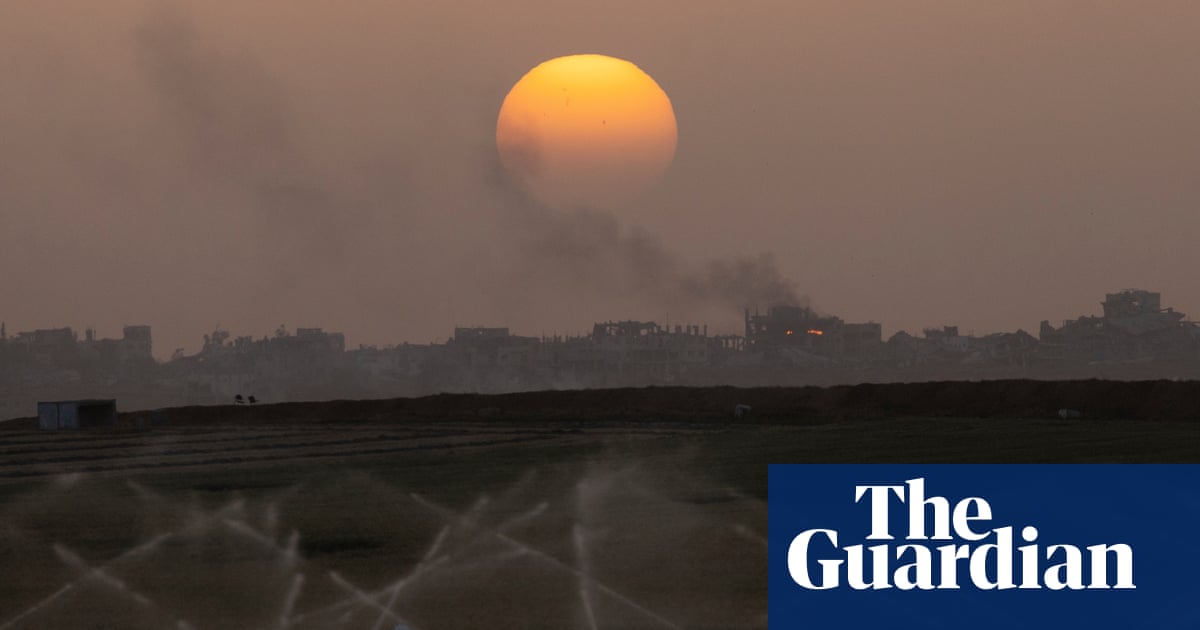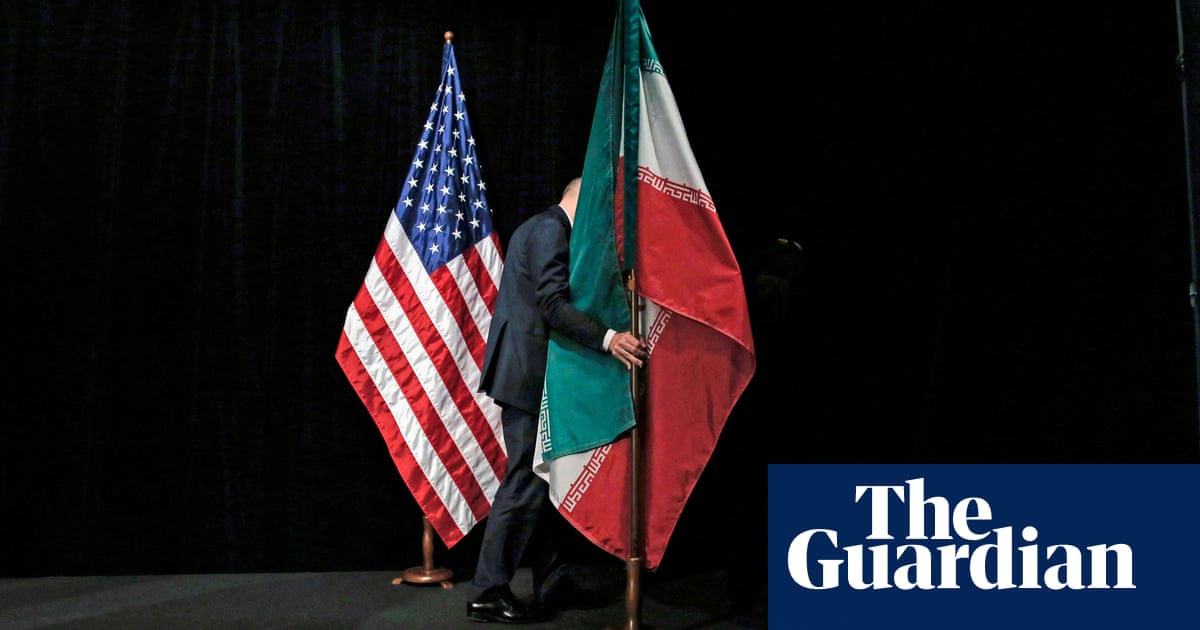Israel’s military razed huge swathes of land inside the perimeter of Gaza and ordered troops to turn the area into a “kill zone” where anybody who entered was a target, according to testimony by soldiers who carried out the plan.
Israeli combatants said they were ordered to destroy homes, factories and farmland roughly 1km (0.6 miles) inside the perimeter of Gaza to make a “buffer zone”, with one describing the area as looking like Hiroshima.
The testimonies are some of the first accounts by Israeli soldiers to be published since the latest war started in October 2023 after Hamas’s attack on Israel. They were collected by Breaking the Silence, a group founded in 2004 by Israeli veterans who aim to expose the reality of the military’s grip over Palestinians. The Guardian interviewed four of the soldiers who corroborated the accounts.
Titled “The Perimeter” and published on Monday, the report said the stated purpose of the plan was to create a thick strip of land that provided a clear line of sight for the Israel Defense Forces (IDF) to identify and kill militants. “This space was to have no crops, structures, or people. Almost every object, infrastructure installation, and structure within the perimeter was demolished,” it said.
Soldiers were “given orders to deliberately, methodically, and systematically annihilate whatever was within the designated perimeter, including entire residential neighbourhoods, public buildings, educational institutions, mosques, and cemeteries, with very few exceptions”, the report added.
The ultimate result, however, was the creation of “a death zone of enormous proportions”, the report said. “Places where people had lived, farmed, and established industry were transformed into a vast wasteland, a strip of land eradicated in its entirety.”
It stretches along the frontier with Israel, from the Mediterranean coast in the north to the strip’s south-east corner next to Egypt.
A sergeant in the combat engineers corps said that once an area in the perimeter “was pretty much empty of any Gazans, we essentially started getting missions that were about basically blowing up houses or what was left of the houses”.
This was the routine, they said: “Get up in the morning, each platoon gets five, six, or seven locations, seven houses that they’re supposed to work on. We didn’t know a lot about the places that we were destroying or why we were doing it. I guess those things today, from my perspective now, are not legitimate. What I saw there, as far as I can judge, was beyond what I can justify that was needed.”
Some soldiers testified that commanders viewed the destruction as a way of exacting revenge for the 7 October attacks by Hamas, which sparked the current war when Palestinian militants killed hundreds and kidnapped Israeli and foreign citizens.
While Israel says the war is targeted at Hamas, Benjamin Netanyahu, the prime minister, is fighting allegations of war crimes and crimes against humanity at the international criminal court, including starvation of civilians and “extermination”.
The IDF did not respond to a request for comment on the report and combatants’ accounts.
One of the soldiers who provided testimony to Breaking the Silence on condition of anonymity said their unit was told to shoot anyone in the perimeter area on sight. The mentality in their unit, they said, was that there was no such thing as a “civilian” and everyone who walked into the perimeter would be considered a “terrorist”.
Rules on who can be killed on sight appeared to vary for different units, according to the accounts.
A sergeant in the armoured corps said that in 2024 he was given “shoot to kill” orders for any male adult who entered the perimeter. “For women and children, [the order was] ‘shoot to drive away’, and if they come close to the fence, you stop [them]. You don’t kill women, children, or the elderly. ‘Shoot to drive away’ means a tank fire,” he said.
But a captain in an armoured corps unit who operated in Gaza earlier in the war, in November 2023, described the border area as a “kill zone”, saying: “The borderline is a kill zone. Anyone who crosses a certain line, that we have defined, is considered a threat and is sentenced to death.”
Another captain said there were “no clear rules of engagement at any point” and described a “generally massive use of firepower, especially, like with tanks”. They added: “There was a lot of instigating fire for the sake of instigating fire, somewhere between [wanting to produce] a psychological effect and just for no reason.
“[We] set out on this war out of insult, out of pain, out of anger, out of the sense that we had to succeed. This distinction [between civilians and terrorist infrastructure], it didn’t matter. Nobody cared. We decided on a line … past which everyone is a suspect.”
How Palestinians would know they were crossing an invisible line was not made clear to them, the soldiers said. “How they know is a really good question. Enough people died or got injured crossing that line, so they don’t go near it.”
Before the latest war, Israel had previously established a buffer zone inside Gaza that extended to 300 metres, but the new one was intended to range from 800 to 1,500 metres, according to the testimonies.
Satellite imagery has previously revealed the IDF destroyed hundreds of buildings that stood within 1km to 1.2km of the perimeter fence, in a systematic demolishing act that rights groups say may constitute collective punishment and should be investigated as a war crime. Last week, Israel’s defence minister said the military would seize “large areas” in Gaza in a fresh offensive.
The perimeter accounts for just over 15% of the Gaza Strip, which is entirely off-limits to Palestinian residents. It represents 35% of the strip’s entire agricultural land, according to the report.
Despite shoot-to-kill orders, a warrant officer stationed in northern Gaza said Palestinians kept going back to the area “again and again after we fired at them”.
The officer said the Palestinians appeared to want to pick edible plants growing in the area. “There was hubeiza [mallow] there because no one went near there. People are hungry, so they come with bags to pick hubeiza, I think.”
Some got away with their food and their lives, the officer said. “The thing is that, at that point, the IDF really is fulfilling the public’s wishes, which state: ‘There are no innocents in Gaza’.”
In an interview with the Guardian, the same officer said the Hamas attack on 7 October 2023 made many Israelis feel the “need to pick up a gun”.
“A lot of us went there, I went there, because they killed us and now we’re going to kill them,” they said. “And I found out that we’re not only killing them – we’re killing them, we’re killing their wives, their children, their cats, their dogs. We’re destroying their houses and pissing on their graves.”










